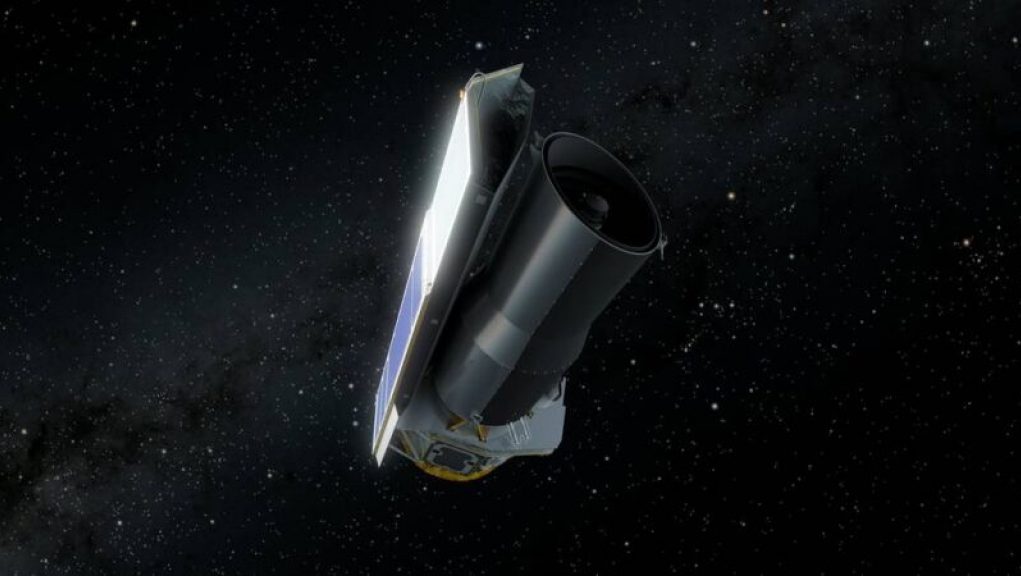The Spitzer Space Telescope has had an incredible journey since it was launched into space two decades ago. It was the last of NASA’s four “Great Observatories” and has helped astronomers discover newly forming stars, observe exoplanets, and study galaxies. Although its onboard supply of liquid helium ran out after seven years, it continued to operate in “warm mission” mode until it was deactivated in January 2020.
But now, a small space technology company called Rhea Space Activity has an audacious plan to resurrect Spitzer. The company has won a $250,000 grant from the US Space Force to study a robotic rescue mission for the spacecraft, which is now about two astronomical units away. The plan has some serious backers, including the Smithsonian Astrophysical Observatory, the Johns Hopkins University Applied Physics Laboratory, Blue Sun Enterprises, and Lockheed Martin.
The “Spitzer Resurrector” mission would be a small spacecraft that could fit into a 1-meter-by-1-meter box and be ready to launch as soon as 2026. It would then take about three years to cruise to the telescope, during which time the spacecraft will make observations of solar flaring. Once it reaches the telescope, it would fly around at a distance of 50 to 100 km to characterize Spitzer’s health. Then it would attempt to establish communications with the telescope and begin to relay information back and forth between the ground and telescope. This would allow scientists to restart observations.
Rhea Space Activity is seeking a larger grant from the military and, ultimately, full funding for a mission expected to cost about $350 million. The effort by Rhea Space is part of an emerging trend in the commercial space industry, with companies like Northrop Grumman and SpaceX developing and launching vehicles to service satellites in orbit. The Department of Defense is interested in these in-space servicing, assembly, and manufacturing capabilities.
Although it’s uncertain what condition the telescope is in after two decades, the company has already had discussions with NASA about the mission, and the agency is likely to sign off on a rescue attempt. The space agency would welcome the return of Spitzer not only for scientific purposes, but also to help characterize the threat of near-Earth asteroids. The Spitzer Resurrector mission is an ambitious and exciting project that could have a significant impact on the future of space exploration.
NASA’s Hubble Space Telescope, or “The Great Observatory” as it is fondly known, has been one of humanity’s greatest gifts to science and has aided in many different discoveries that have been integral to our understanding of the universe. After thirty years of success, the telescope’s service is nearing its eventual end and to ensure that a similar grand observatory can continue to operate and collect data, a private American company has stepped up to the plate.
The Axion Space Corporation, led by United States Army General Relativity Stephen A. Kitay, has released a proposal to fund the development of a privately-operated space station. The new observatory, called the Axion Hubble Array Platform (AHAP), will be the first of its kind and is scheduled to be launched in 2025. The goal of the observatory is to collect unprecedented amounts of scientific data and to conduct experiments in astrophysics and other related fields.
The AHAP will be powered with a solar sail, which absorbs sunlight and turns it into electrical energy. This power will be used to keep the telescope running and will also power a set of advanced telescopes for more precise imaging and science. The observatory will have a total of 16 cameras of various sizes, some capable of studying exoplanets and other distant objects. Additionally, its onboard computers will be able to collect and analyze large amounts of data from further astronomical sources, such as galaxies and stars.
The venture intends to bring a significant return on the investment, with official sources estimating that the project should generate close to $1 billion in revenue each year. This money will be split between the Axion Space Corporation and their partners, and will fund the development of further scientific discoveries.
In the wake of the Hubble Space Telescope’s eventual retirement, the Axion Hubble Array Platform offers a viable and exciting alternative that can continue driving science forward into the future. We wish the project luck and can’t wait to see what discoveries the AHAP will make.




















